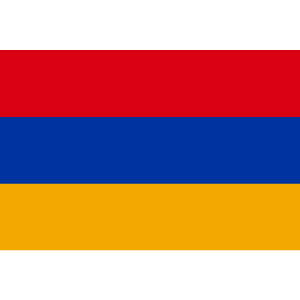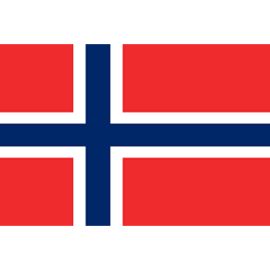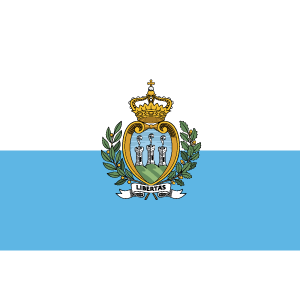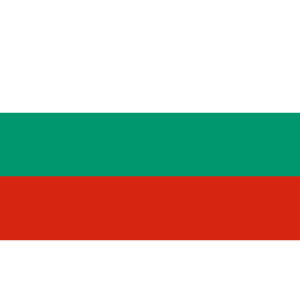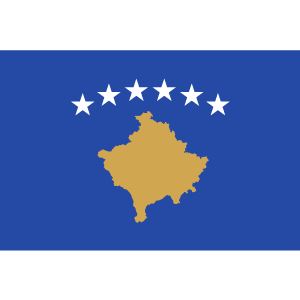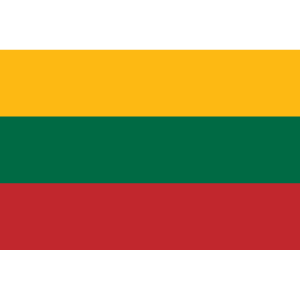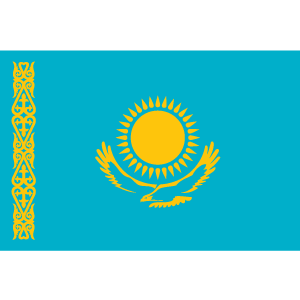Search results
Other games
Group B GP W D L Pts 1  France
France8 7 1 0 22 2  Netherlands
Netherlands8 6 0 2 18 3  Greece
Greece8 4 1 3 13 4  Republic of Ireland
Republic of Ireland8 2 0 6 6 5  Gibraltar
Gibraltar8 0 0 8 0 Group C GP W D L Pts 1  England
England8 6 2 0 20 2  Italy
Italy8 4 2 2 14 3  Ukraine
Ukraine8 4 2 2 14 4  North-Macedonia
North-Macedonia8 2 2 4 8 5  Malta
Malta8 0 0 8 0 Group E GP W D L Pts 1  Albania
Albania8 4 3 1 15 2  Czech Republic
Czech Republic8 4 3 1 15 3  Poland
Poland8 3 2 3 11 4  Moldova
Moldova8 2 4 2 10 5  Faroe Islands
Faroe Islands8 0 2 6 2 Group F GP W D L Pts 1  Belgium
Belgium8 6 2 0 20 2  Austria
Austria8 6 1 1 19 3 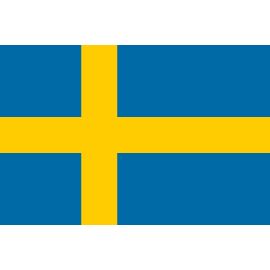 Sweden
Sweden8 3 1 4 10 4  Azerbaijan
Azerbaijan8 2 1 5 7 5  Estonia
Estonia8 0 1 7 1 Armenia ( / ɑːrˈmiːniə / ⓘ ar-MEE-nee-ə ), [14] [a] officially the Republic of Armenia, [b] is a landlocked country in the Armenian Highlands of West Asia. [15] [16] It is a part of the Caucasus region and is bordered by Turkey to the west, Georgia to the north and Azerbaijan to the east, and Iran and the Azerbaijani exclave of ...
- Overview
- Relief
- Drainage
- Soils
- Climate
- Plant and animal life
- Ethnic groups
- Religion
Armenia, landlocked country of Transcaucasia, lying just south of the great mountain range of the Caucasus and fronting the northwestern extremity of Asia. To the north and east Armenia is bounded by Georgia and Azerbaijan, while its neighbours to the southeast and west are, respectively, Iran and Turkey. Naxçıvan, an exclave of Azerbaijan, borders Armenia to the southwest. The capital is Yerevan (Erevan).
Modern Armenia comprises only a small portion of ancient Armenia, one of the world’s oldest centres of civilization. At its height, Armenia extended from the south-central Black Sea coast to the Caspian Sea and from the Mediterranean Sea to Lake Urmia in present-day Iran. Ancient Armenia was subjected to constant foreign incursions, finally losing its autonomy in the 14th century ce. The centuries-long rule of Ottoman and Persian conquerors imperiled the very existence of the Armenian people. Eastern Armenia was annexed by Russia during the 19th century, while western Armenia remained under Ottoman rule, and in 1894–96 and 1915 the Ottoman government perpetrated systematic massacres and forced deportations of Armenians.
The portion of Armenia lying within the former Russian Empire declared independence on May 28, 1918, but in 1920 it was invaded by forces from Turkey and Soviet Russia. The Soviet Republic of Armenia was established on November 29, 1920; in 1922 Armenia became part of the Transcaucasian Soviet Federated Socialist Republic; and in 1936 this republic was dissolved and Armenia became a constituent (union) republic of the Soviet Union. Armenia declared sovereignty on August 23, 1990, and independence on September 23, 1991.
The status of Nagorno-Karabakh (also called Artsakh), an enclave of 1,700 square miles (4,400 square km) in southwestern Azerbaijan populated primarily by ethnic Armenians, was from 1988 the source of bitter conflict between Armenia and Azerbaijan. By the mid-1990s Karabakh Armenian forces had occupied much of southwestern Azerbaijan, but, after a devastating war in 2020, they were compelled to withdraw from most of that area.
Britannica Quiz
Which Country Is Larger? Quiz
Armenia is a mountainous country characterized by a great variety of scenery and geologic instability. The average elevation is 5,900 feet (1,800 metres) above sea level. There are no lowlands: half the territory lies at elevations of 3,300 to 6,600 feet; only about one-tenth lies below the 3,300-foot mark.
Exclusive academic rate for students! Save 67% on Britannica Premium.
Learn More
The northwestern part of the Armenian Highland—containing Mount Aragats (Alaghez), the highest peak (13,418 feet, or 4,090 metres) in the country—is a combination of lofty mountain ranges, deep river valleys, and lava plateaus dotted with extinct volcanoes. To the north and east, the Somkhet, Bazum, Pambak, Gugark, Areguni, Shakhdag, and Vardenis ranges of the Lesser Caucasus lie across the northern sector of Armenia. Elevated volcanic plateaus (Lory, Shirak, and others), cut by deep river valleys, lie amid these ranges.
In the eastern part of Armenia, the Sevan Basin, containing Lake Sevan (525 square miles) and hemmed in by ranges soaring as high as 11,800 feet, lies at an elevation of about 6,200 feet. In the southwest, a large depression—the Ararat Plain—lies at the foot of Mount Aragats and the Geghama Range; the Aras River cuts this important plain into halves, the northern half lying in Armenia and the southern in Turkey and Iran.
Armenia is subject to damaging earthquakes. On December 7, 1988, an earthquake destroyed the northwestern town of Spitak and caused severe damage to Leninakan (now Gyumri), Armenia’s second most populous city. About 25,000 people were killed.
Of the total precipitation, some two-thirds is evaporated, and one-third percolates into the rocks, notably the volcanic rocks, which are porous and fissured. The many rivers in Armenia are short and turbulent with numerous rapids and waterfalls. The water level is highest when the snow melts in the spring and during the autumn rains. As a result of considerable difference in elevation along their length, some rivers have great hydroelectric potential.
Most of the rivers fall into the drainage area of the Aras (itself a tributary of the Kura River of the Caspian Basin), which, for 300 miles (480 kilometres), forms a natural boundary between Armenia and Turkey and Iran.
The Aras’ main left-bank tributaries, the Akhuryan (130 miles), the Hrazdan (90 miles), the Arpa (80 miles), and the Vorotan (Bargyushad; 111 miles), serve to irrigate most of Armenia. The tributaries of the Kura—the Debed (109 miles), the Aghstev (80 miles), and others—pass through Armenia’s northeastern regions. Lake Sevan, with a capacity in excess of 9 cubic miles (39 cubic kilometres) of water, is fed by dozens of rivers, but only the Hrazdan leaves its confines.
Armenia is rich in springs and wells, some of which possess medicinal properties.
More than 15 soil types occur in Armenia, including light brown alluvial soils found in the Aras River plain and the Ararat Plain, poor in humus but still intensively cultivated; rich brown soils, found at higher elevations in the hill country; and chernozem (black earth) soils, which cover much of the higher steppe region. Much of Armenia’s soil—f...
Because of Armenia’s position in the deep interior of the northern part of the subtropical zone, enclosed by lofty ranges, its climate is dry and continental. Regional climatic variation is nevertheless considerable. Intense sunshine occurs on many days of the year. Summer, except in high-elevation areas, is long and hot, the average June and August temperature in the plain being 77° F (25° C); sometimes it rises to uncomfortable levels. Winter is generally not cold; the average January temperature in the plain and foothills is about 23° F (−5° C), whereas in the mountains it drops to 10° F (−12° C). Invasions of Arctic air sometimes cause the temperature to drop sharply: the record low is −51° F (−46° C). Winter is particularly inclement on the elevated, windswept plateaus. Autumn—long, mild, and sunny—is the most pleasant season.
The ranges of the Lesser Caucasus prevent humid air masses from reaching the inner regions of Armenia. On the mountain slopes, at elevations from 4,600 to 6,600 feet, yearly rainfall approaches 32 inches (800 millimetres), while the sheltered inland hollows and plains receive only 8 to 16 inches of rainfall a year.
The broken relief of Armenia, together with the fact that its highland lies at the junction of various biogeographic regions, has produced a great variety of landscapes. Though a small country, Armenia boasts more plant species (in excess of 3,000) than the vast Russian Plain. There are five altitudinal vegetation zones: semidesert, steppe, forest, alpine meadow, and high-elevation tundra.
The semidesert landscape, ascending to an elevation of 4,300 to 4,600 feet, consists of a slightly rolling plain covered with scanty vegetation, mostly sagebrush. The vegetation includes drought-resisting plants such as juniper, sloe, dog rose, and honeysuckle. The boar, wildcat, jackal, adder, gurza (a venomous snake), scorpion, and, more rarely, the leopard inhabit this region.
Steppes predominate in Armenia. They start at elevations of 4,300 to 4,600 feet, and in the northeast they ascend to 6,200 to 6,600 feet. In the central region they reach 6,600 to 7,200 feet and in the south are found as high as 7,900 to 8,200 feet. In the lower elevations the steppes are covered with drought-resistant grasses, while the mountain slopes are overgrown with thorny bushes and juniper.
The forest zone lies in the southeast of Armenia, at elevations of 6,200 to 6,600 feet, where the humidity is considerable, and also in the northeast, at elevations of 7,200 to 7,900 feet. Occupying nearly one-tenth of Armenia, the northeastern forests are largely beech. Oak forests predominate in the southeastern regions, where the climate is drier, and in the lower part of the forest zone hackberry, pistachio, honeysuckle, and dogwood grow. The animal kingdom is represented by the Syrian bear, wildcat, lynx, and squirrel. Birds—woodcock, robin, warbler, titmouse, and woodpecker—are numerous.
The alpine zone lies above 6,600 feet, with stunted grass providing good summer pastures. The fauna is rich; the abundant birdlife includes the mountain turkey, horned lark, and bearded vulture, while the mountains also harbour the bezoar goat and the mountain sheep, or mouflon.
Finally, the alpine tundra, with its scant cushion plants, covers only limited mountain areas and solitary peaks.
Armenians constitute nearly all of the country’s population; they speak Armenian, a distinct branch of the Indo-European language family. The remainder of the population includes Kurds, Russians, and small numbers of Ukrainians, Assyrians, and other groups.
Armenia was converted to Christianity about 300 ce, becoming the first kingdom to adopt the religion after the Arsacid king Tiridates III was converted by St. Gregory the Illuminator. The Armenians have therefore maintained an ancient and rich liturgical and Christian literary tradition. Believing Armenians today belong mainly to the Armenian Apost...
A comprehensive overview of Armenia's history, geography, politics, economy, society, and culture. Learn about Armenia's adoption of Christianity, its conflict with Azerbaijan over Nagorno-Karabakh, its relations with Turkey and the EU, and more.
Jan 30, 2024 · Armenia country profile. A landlocked country in the Caucasus with Turkey to the west, Georgia to the north, and Azerbaijan to the east, Armenia boasts a history longer than most European ...
Under the Orontids, Armenia during this era was a satrapy of the Persian Empire, and after its disintegration (in 330 BC), it became an independent kingdom. During the rule of the Orontid dynasty, most Armenians adopted the Zoroastrian religion. Armenia, Mesopotamia, Babylonia and Assyria with Adjacent Regions, Karl von Spruner, published in 1865.
Armenia - Ancient, Soviet, Genocide: The Armenians, an Indo-European people, first appear in history shortly after the end of the 7th century bce. Driving some of the ancient population to the east of Mount Ararat, where they were known to the Greeks as Alarodioi (“Araratians”; i.e., Urartians), the invaders imposed their leadership over regions which, although suffering much from Scythian ...
Armenia is a Christian majority country, with European and some wider Eurasian cultural influences. [17] The Republic of Armenia recognises the Armenian Apostolic Church, the world's oldest national church, as the country's primary religious establishment. [18] [19] The unique Armenian alphabet was invented by Mesrop Mashtots in 405 AD.
